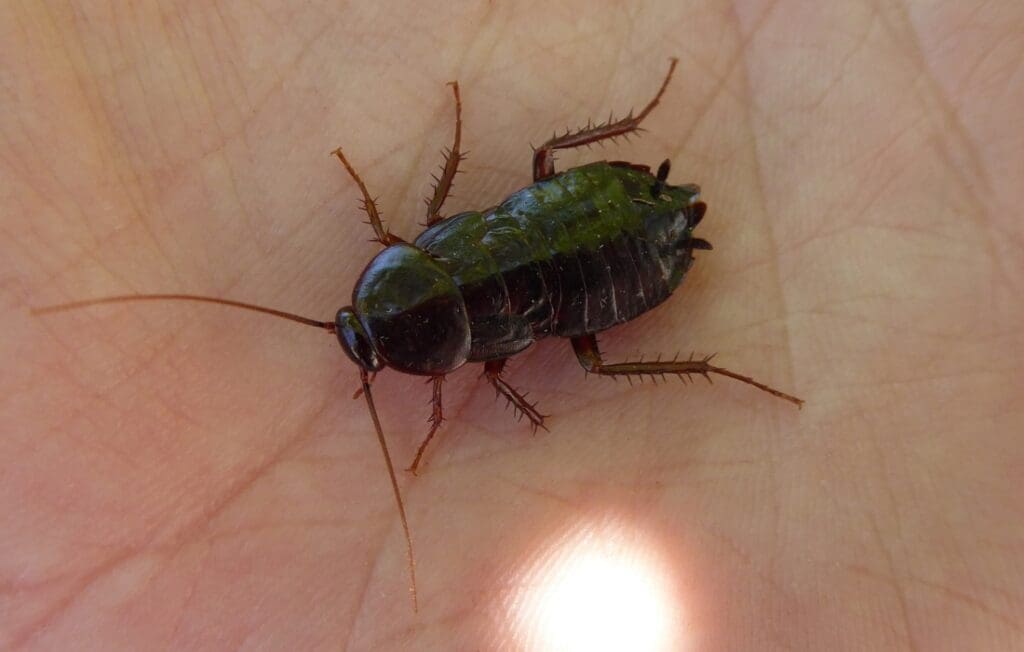
The phrase “water bug” is commonly used for dark, moisture-loving pests found indoors, yet it properly identifies two separate categories: true water bugs and a widespread cockroach species.
If you’re dealing with “water bugs” indoors, you’re likely dealing with cockroaches. Act swiftly—infestations escalate within weeks.
What is a Water Bug?
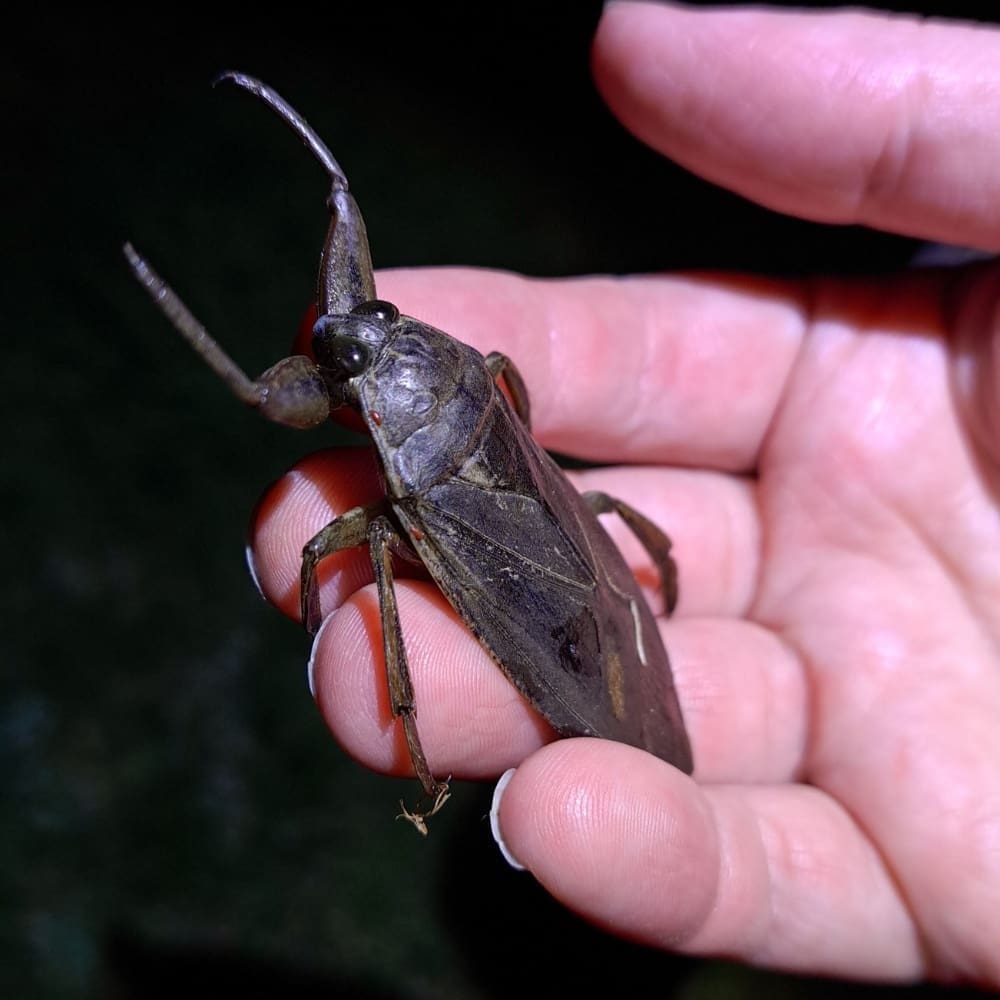
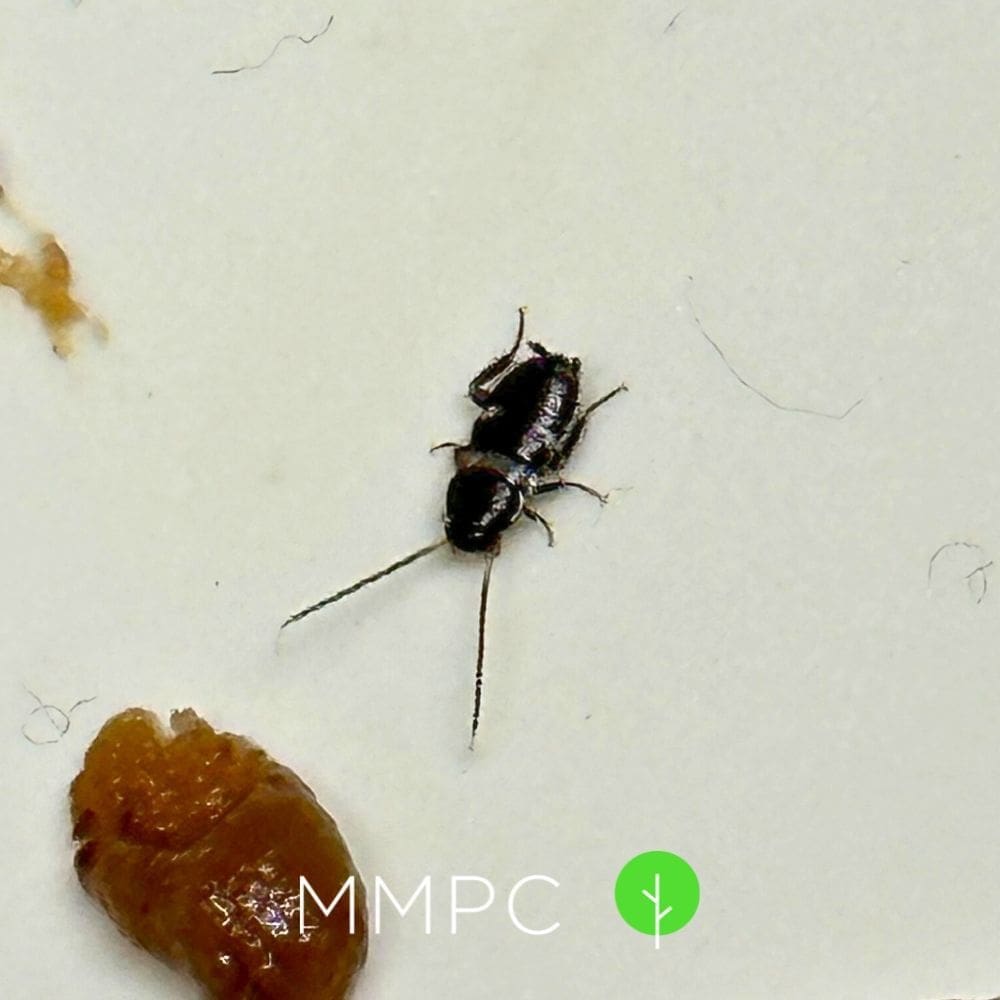
While both are colloquially called “water bugs,” true water bugs (giant water bugs) and Oriental cockroaches are biologically distinct insects with stark differences in ecology, behavior, and impact on humans.
True water bugs belong to the family Belostomatidae, a group of aquatic predatory insects. On the other hand, oriental cockroaches belong to the family Blattidae (cockroaches), which are terrestrial scavengers.
Below is a detailed comparison:
Physical Characteristics
| Feature | True Water Bugs | Oriental Cockroaches |
| Size | 2–4 inches (among the largest aquatic insects). | 1–1.25 inches. |
| Body Shape/Color | Oval, flattened; tan to dark brown/mottled for camouflage. | Oval, flattened; glossy dark brown/black. |
| Legs | Hooked front legs for grasping prey; hind legs fringed for swimming. | Spiny legs for crawling through debris; no swimming adaptations. |
| Wings | Functional wings (can fly short distances). | Males: wings cover ¾ of abdomen (non-functional); females: wing stubs. Neither can fly. |
Habitat & Behavior
True water bugs are aquatic predators that live in freshwater ecosystems like ponds, marshes, and slow streams. They hunt insects, tadpoles, and small fish. Notably, their presence often indicates a healthy environment, as they reduce mosquito populations.
On the other hand, oriental cockroaches thrive in unsanitary, moist locations. They aren’t predators; in fact, they scavenge decaying organic matter and avoid light. These pests infiltrate homes through cracks and drains, seeking food and moisture.
Ecological Role
True water bugs benefit ecosystems by naturally controlling pests. They rarely interact with humans and pose no health risks unless directly handled.
Oriental cockroaches threaten human health. They spread bacteria like Salmonella and E. coli by contaminating surfaces. Their droppings and shed skin can worsen allergies and asthma.
How to Get Rid of “Water Bugs” (Cockroaches)
Since true water bugs rarely infest homes, control focuses on Oriental cockroaches. Here’s how to deal with them:
1. Prevention and Exclusion
Seal Entry Points:
- Use caulk to seal cracks and gaps in your home’s exterior
- Install door sweeps on all exterior doors
- Seal openings around pipes and windows
Moisture Control:
- Fix leaky pipes and faucets within 24-48 hours
- Use dehumidifiers to maintain humidity below 50%
- Ensure proper ventilation in bathrooms and kitchens
Eliminate Food Sources:
- Store food in airtight glass containers
- Clean up crumbs and spills immediately
- Empty pet food bowls at night
- Dispose of garbage regularly in sealed containers

2. Effective DIY Methods
Bait Stations:
- Place bait stations containing hydramethylnon or fipronil near cockroach harborages
- Focus on areas under sinks, near appliances, and along baseboards. Keep bait stations away from children and pets
Gel Baits:
- Apply in cracks and crevices where cockroaches hide
- Reapply as needed based on infestation levels
Insect Growth Regulators (IGRs):
- Use products containing hydroprene to disrupt cockroach development
- Apply in areas where cockroaches breed
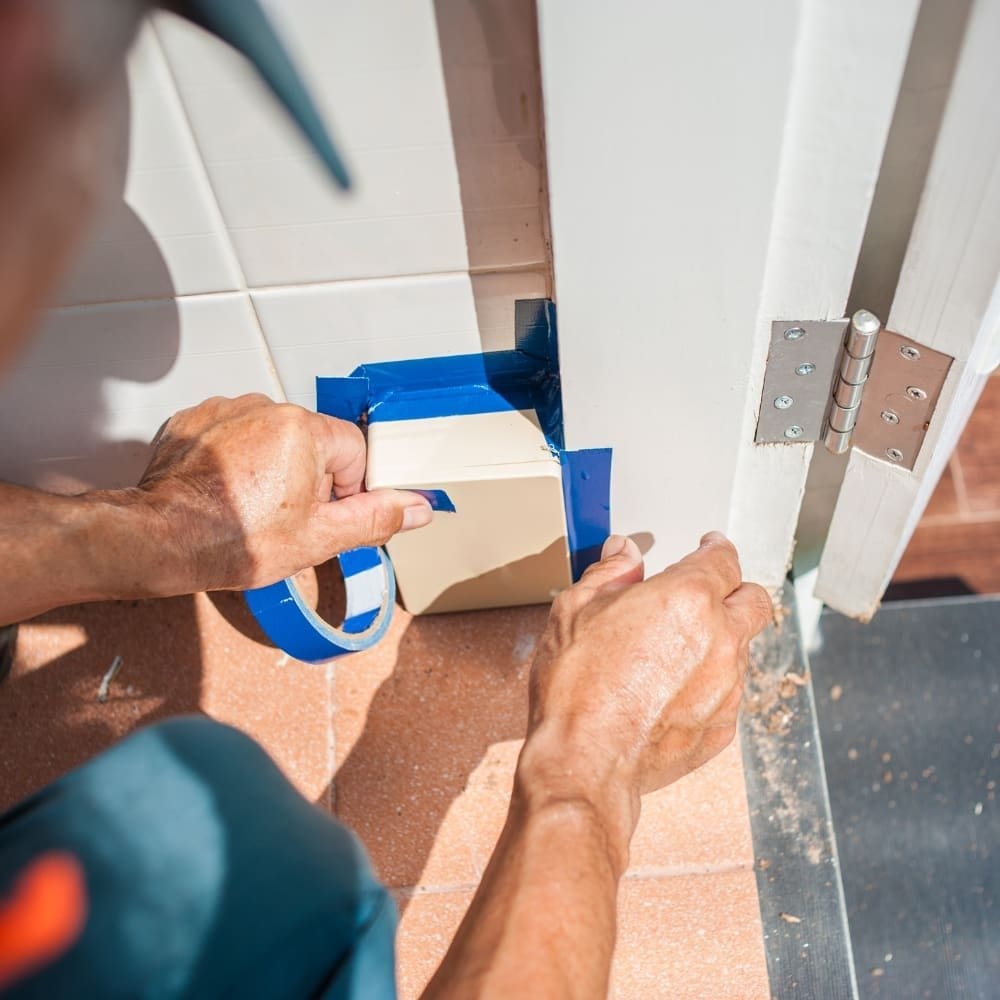
3. Natural Treatment Options
Diatomaceous Earth:
- Apply thin layers in corners, crevices, and under appliances
- Focus on entry points like doors and windows
- Reapply after cleaning or if the powder becomes wet
Boric Acid:
- Sprinkle in areas where cockroaches travel
- Keep away from children and pets
- Works by dehydrating cockroaches and disrupting their digestive systems
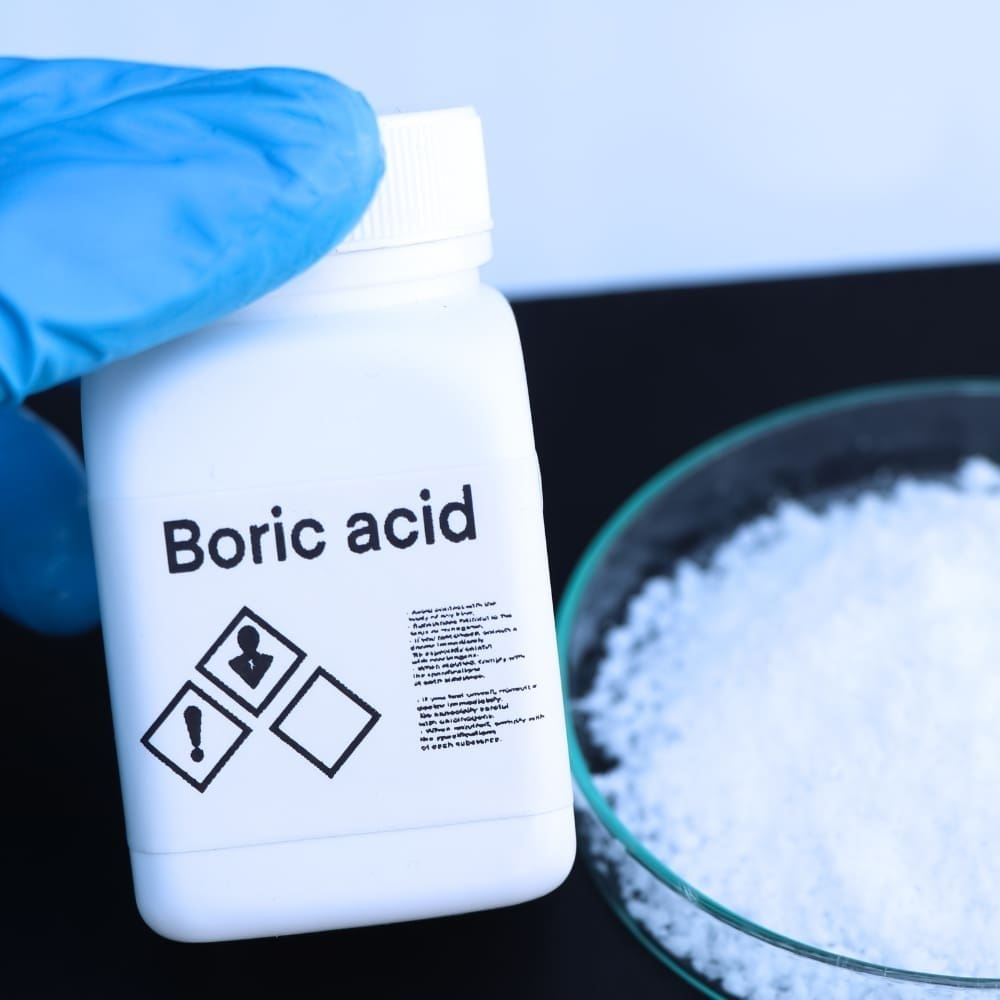
When to Call Professional Pest Control
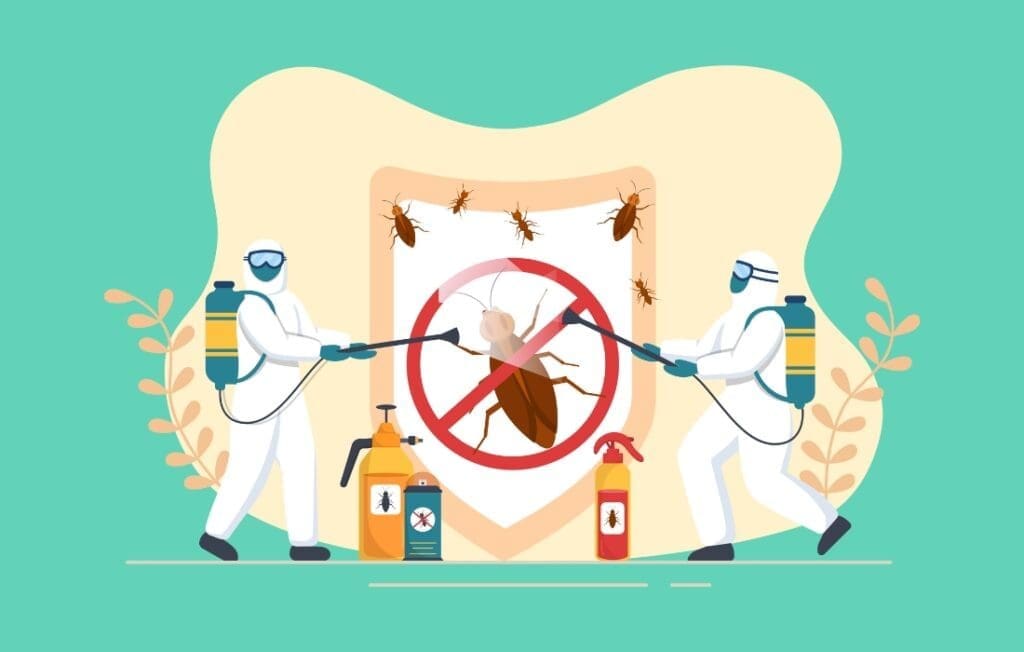
While DIY methods work for minor infestations, consider professional help if:
- Infestations persist: Roaches reproduce rapidly; a persistent problem indicates a large, hidden colony.
- Health concerns: Allergies or asthma aggravated by roach allergens require expert eradication.
- Uncertain identification: Professionals can distinguish between water bugs and roaches and can provide correct treatment.
Pest control experts use targeted insecticides, growth regulators, and exclusion techniques for long-term solutions.
Why Trust MMPC?
“Water bugs” risk unchecked infestations. If you’re dealing with a continuing cockroach issue, it’s important to blend preventive strategies- such as sealing off entry points and removing moisture- with specific baits and natural repellents. For severe cases, professionals guarantee species-level eradication.
Need clarity on what cockroach you have in your home? Send photos to our experts for a free identification.
